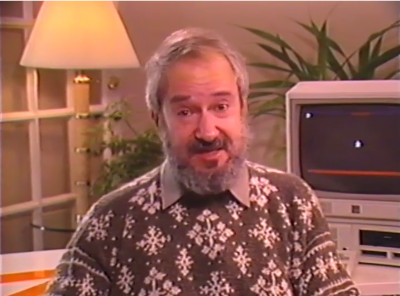Seymour Papert
I’ve been a fan of Seymour Papert since reading his book, "Mindstorms: Children, Computers, And Powerful Ideas" (1980).
See also microworlds, a Papert concept I adore.
Mindstorms
I just took a look at my review of the book from 2012 and, in short, I agree with most of what I wrote then. Paraphrasing:
Papert believes that children learn most effectively when they’re trying to solve a problem - and when they’re genuinely interested in the outcome of the problem. I believe that too.
He also believes that computers allow us to examine and learn subjects such as mathematics and physics in intuitive ways which simply are not possible with pencil and paper. Computers encourage experimentation, problem-solving, and iterative attempts at a problem until the desired outcome is finally achieved.
Spot on in my opinion.
One other thing that stuck with me, and this is a direct quote from my book review in 2012:
Something else to note: for a book that was first published in 1980, the content has hardly aged a day. In fact, many of Papert’s prognostications are so dead-on correct that it’s really quite amazing. I feel that his uncanny ability to have forseen the future of technology so accurately lends a lot of credibility to his ideas and abilities as a thinker in general.
On Logo (video series)

Here’s something cool: Papert is in a 1986 video series called On Logo and it’s available in its entirety here:
Some notes (in my words):
Tape 1/8 "Resonances"
When you teach something to someone, you deprive them of the pleasure of discovering it themselves.
But, it’s not possible or desirable to take this literally and not teach a child anything!
The real goal is to achieve appropriation, where you make knowledge your own and feel good about it.
The opposite of this is to have knowledge that doesn’t sit right, feels alien in your head.
Discovery often leads to appropriation.
The connection between childhood excitement about space and about computers are connected. There is a sense that interacting with computers is a way to touch something that is connected in some way with the awe of space travel. (I think this was very true in the 1980s!)
School feels like more of a connection with the past than a preview of the future.
Things we "resonate" with are evocative objects. We are fascinated by those things. For many, animals are evocative objects. We are fascinated by them.
The computer can be a "micro world" that is engaging and intimate.
Children want to appropriate what’s on "the screen" (movies, TV, and video games). To have that, they must master the technology.
Then Papert talks about about the process of trying to create a LOGO that would allow kids to make their own Pac Man games:
The obvious first step is to put something on the screen. (Let’s reflect on how HARD that is is most programming environments as I write this in 2023.)
"I like things that move." So he puts animated Pac Man and ghosts on the screen. (We are not shown how this is done.) Next comes controlling the character with the keyboard. The ghost pursues. Then more game elements such as eating pellets.
As you build something like this game, you get inside it. You understand it from the inside out and you identify with elements on an almost personal level.
To critics who think computers are too abstract for children: there’s a worse kind of abstract in the classroom. The kind of abstract where children are being taught things to which they cannot relate or connect to at all.
Tape 2/8 "Teaching"
"Huck Finn" (Mark Twain’s character) style programming - a simpler way of programming.
(Papert demonstrates some turtle commands now: RIGHT, LEFT, FORWARD, BACK, PENDOWN etc.)
Moving the turtle gives us insight into the study of geometry because it relates turning by degrees to something we’re already familiar with: turning and moving our own bodies. This is what Papert calls "Body-Syntoic Learning".
Children learn by experience: numbers for certain amounts of "turn" and a certain amounts of "move".
To explain the "Huck Finn" style of learning to program, we contrast with "Hard Edge" style learning (Papert’s term) in which children are requested to try out specific short LOGO programs to make specific shapes. Then they are requested to make larger scenes by combining these known shapes.
Huck Finn might try moving the turtle a very large amount so that it wraps around the screen and draws a fun pattern of lines. Children like making patterns like this.
The surprise for the child is how much interesting stuff can be done with such a simple command when the turtle’s wrap-around behavior is exploited like this. Also how random the turtle’s ending position seems to be.
What should a teacher do when children seem to want to spend their time just making pretty patterns like this over and over? There’s no one right answer. One option is to simplify the operation to focus attention on the different aspects of what’s happening: with PENUP, the turtle will now appear at different places on the screen each time without actually drawing patterns. Now we’ve learned how to make the turtle appear somewhere that appears "random".
Left off at: 14min